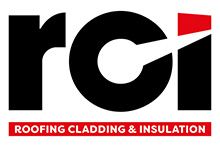Etex has launched a third-party tested solution for securing steel infill wall systems to fire protected structural beams.
Working with passive fire protection specialist Promat, Remagin has undertaken comprehensive testing to demonstrate mechanical performance where the SFS interfaces with boarded structural steelwork.
A company statement said that while it is vital that structural steelwork is protected from the threat of fire to maintain its structural integrity, it is also essential to demonstrate that the fixings for items to that same steel will be suitable for the ambient conditions of the design.
Introducing board between SFS heads and steel beams can cause additional rotational movement, it cited, increasing bending moments on fixings and raising the risk of fatigue under dynamic loads.
To address this, Remagin said it conducted independent tests on various screw types and configurations, gathering key data on failure loads and the level of movement. This was followed by cyclic loading tests, simulating real-world wind pressure on SFS infill wall panels.
The results provided critical insights into fixing performance, it added, allowing Remagin to develop a data-driven approach to screw design and specification with each fixing solution tailored to meet project-specific requirements to ensure structural reliability.
In addition to mechanics, Etex stated that it has also conducted bespoke fire resistance tests of walls attached to encased beams, to demonstrate the resilience of the connection between the two systems.
Richard Wilson, technical and specification manager at Remagin, said: “Through comprehensive testing, Remagin has successfully verified the mechanical capabilities of fixings used in key scenarios to ensure continued robustness.
“Each fixing design is customised to the specific requirements of individual projects, and it is essential that the structural steel protection strategy and the SFS design are addressed as early as possible and coordinated well.
“In addition, the fire testing demonstrated that fire integrity and insulation are maintained at the interface between the boarded primary steel and the wall system below. This testing provides confidence in the fire resistance capabilities of the holistic system to achieve performance through the complete elevation.
“Having the ability to carry out robust testing in partnership with Promat and Siniat as collaborative brands – all being part of the Etex group – supports the collaborative approach that is vital to driving up standards and offering expanded data beyond basic compliance.”
Joshua Slack, commercial director at Promat UK, added: “It is really important that as an industry we consider what systems are best designed to protect different buildings and applications.
“Intumescent paint has been commonly used where SFS interfaces with steel framework, due to the ease of the direct SFS fixing. However, complications can arise with this approach, firstly in ensuring the SFS and any required insulation allows space for the paint to intumesce.
“In addition, where the structural steel aligns with a fire compartment line the temperature needs to be kept lower than that which intumescent paints typically activates at. These factors should be reviewed on a case-by-case basis to ensure the best passive fire protection system is in place for the project.
“By carrying out specific testing in partnership with Promat and Siniat, Remagin has ensured that design teams have clear data available to make design decisions and de-risk their projects.
“It is important that the industry continues to work together to continue to enhance and develop testing and certification to support accurate and confident specification and meet challenges or concerns head-on where possible.
“It is great to see the Etex brands working together to support such a comprehensive offering in the building envelope.”




